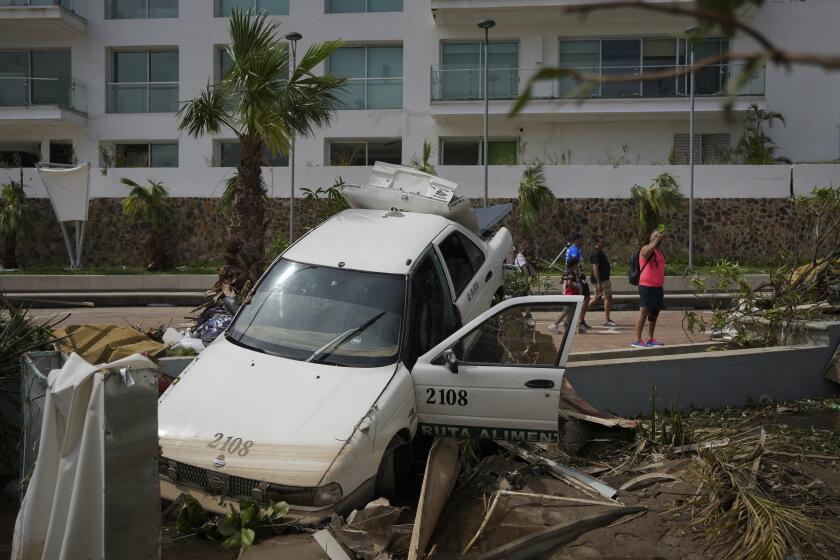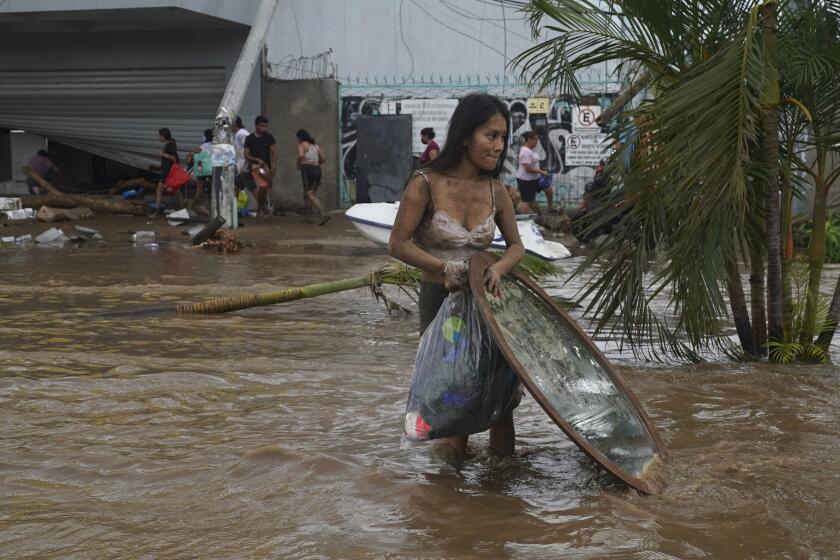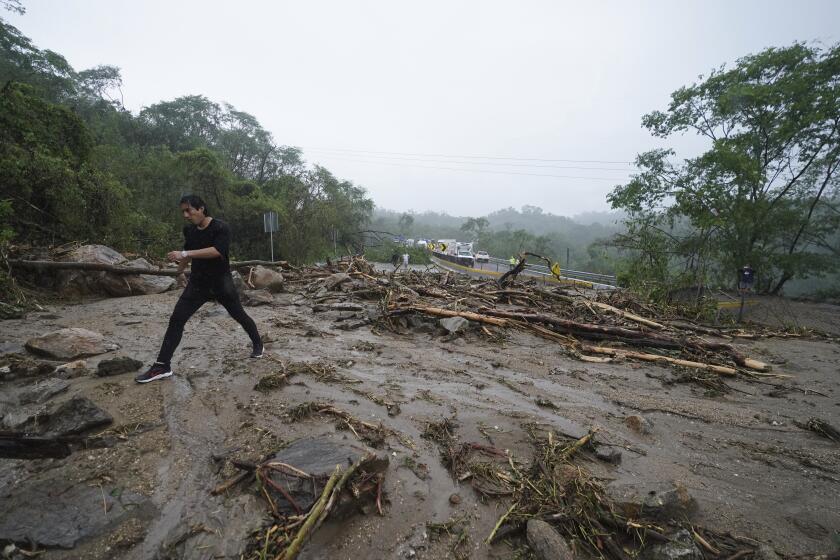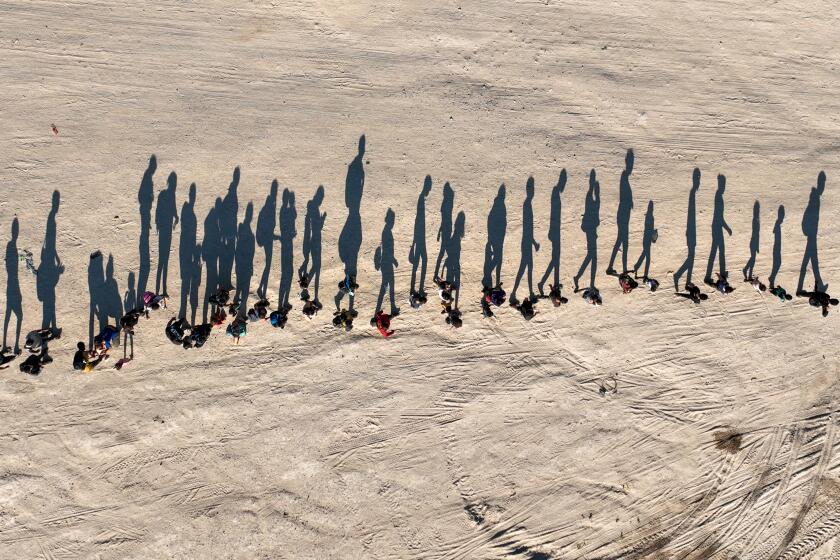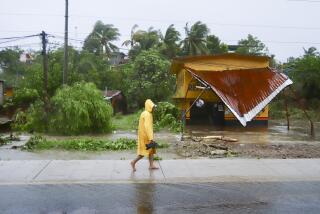Mexico hurricane deaths are up to 43 as searchers comb debris; toll expected to rise
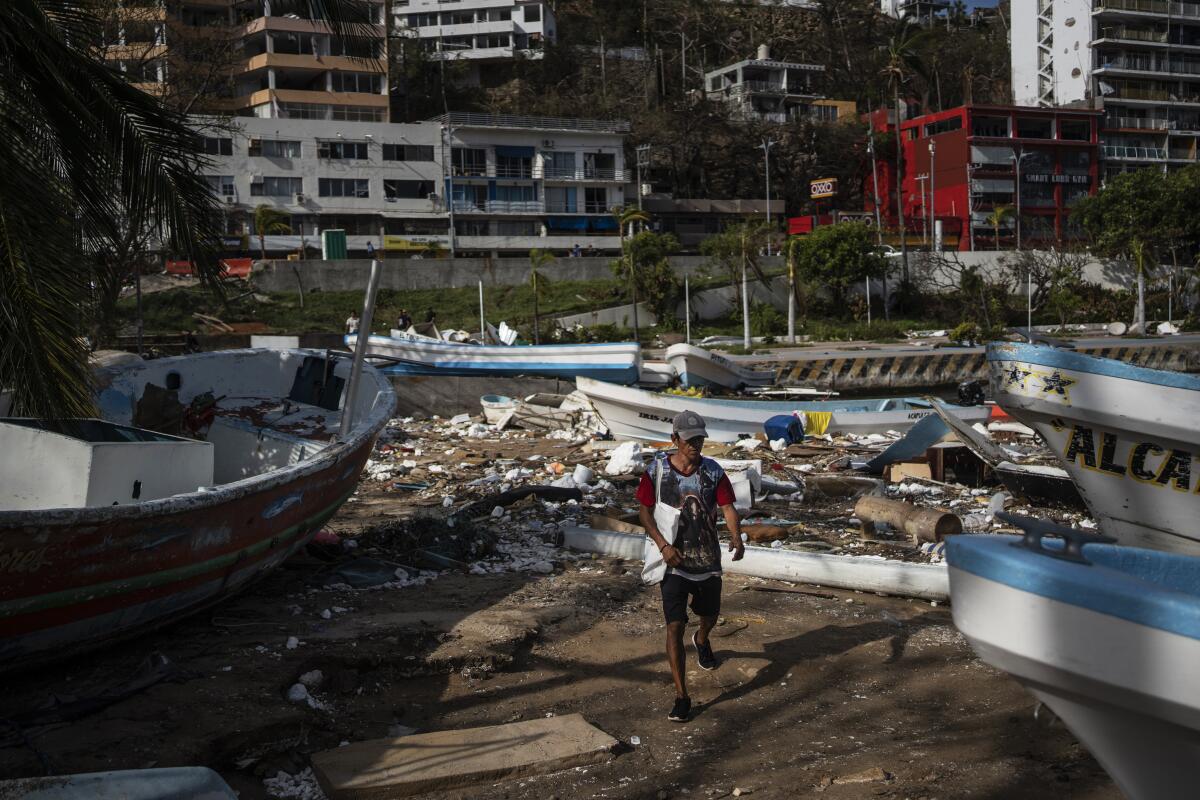
ACAPULCO â At least 43 people died when Category 5 Hurricane Otis slammed into Mexicoâs southern Pacific coast, the governor of hard-hit Guerrero state said Sunday as the death toll continued to climb.
Gov. Evelyn Salgado said on X, the platform formerly called Twitter, that the number of missing also rose to 36 from 10 a day earlier. That increase came after authorities had raised the death toll to 39 on Saturday.
Hundreds of families are still awaiting word from loved ones.
Otis roared ashore early Wednesday with devastating 165 mph winds after strengthening so rapidly that people had little time to prepare.
Families began to bury the dead Sunday and continued the search for essentials while government workers and volunteers cleared streets clogged with muck and debris from the deluge.
More resources were arriving as searchers recovered more bodies from Acapulcoâs harbor and from beneath fallen trees and other storm debris.
Kristian Vera stood on an Acapulco beach Saturday looking out toward dozens of sunken boats, including three of her own, all marked by floating buoys or just poking out of the water.
Despite losing her livelihood in Otisâ brutal pass over Mexicoâs Pacific coast, the 44-year-old fisher felt fortunate. Earlier in the day, she watched a body pulled from the water and saw families coming and going, looking for their loved ones.
But Vera and others suggested that the toll will likely grow, in part because of the number of people who rode out on boats during what had started as a tropical storm and in just 12 hours powered up into a catastrophic hurricane.
More than two days after Otis struck Acapulco as a Category 5 hurricane, hundreds of thousands of homes are without power and survivors are growing desperate.
Vera took turns with four others swimming out with empty gas jugs for flotation to try to raise their sunken boats from the shallow harbor.
Leaning against a small wooden fishing boat like her own, tipped on its side on a beach strewn with trash and fallen trees, she explained that some of the people who died were either fishers caring for their boats or yacht captains who were told by their owners that they needed to make sure the boats were OK when Otis was still a tropical storm.
âThat night I was so worried because I live off of this, itâs how I feed my kids,â Vera said. âBut when I began to feel how strong the wind was, I said, âTomorrow I wonât have a boat, but God willing Acapulco will see another day.â â
After deadly Hurricane Otis made landfall in Mexico, communication with Acapulco was still mostly down. Hundreds of thousands were without electricity.
In Acapulco, government workers and volunteers cleared streets, gas station lines wrapped around the block for what fuel was to be had, and some lucky families found food essentials as a more organized relief operation took shape four days after the storm hit.
Military personnel and volunteers worked along Acapulcoâs main tourist strip. They sliced through fallen palm trees and metal signs. Cellphone signals were partially recovered near some of the most luxurious hotels, and authorities placed a charging station for people to charge their phones.
But on the periphery of the city, neighborhoods remained in ruins. Salgado also said that the national electric company reported restoring power to 58% of homes and businesses in Acapulco and 21 water tankers were distributing water to outlying neighborhoods.
With no signal, no water and no food, people young and old trudged through foot-deep mud and flooded streets to get to large warehouses someone had found full of food. They carried away bags of food and liquids.
Hurricane Otis slammed into Mexicoâs southern Pacific coast as a catastrophic Category 5 storm, bringing 165 mph winds and heavy rain to Acapulco and nearby towns.
Aid has been slow to arrive. The stormâs destruction cut off the city of nearly 1 million people for the first day, and because it intensified so quickly on Tuesday, little to nothing had been staged in advance.
Authorities had the difficult task of searching for the dead and missing. One military officer, who did not want to give his name because he was not authorized to speak to media, said that searchers in his area had found at least six bodies and that his own unit had found one. It was difficult to find bodies because they were often covered in trees and other debris, he said.
Most families anxiously hunted for water, with some saying they were rationing their supplies. The municipal water system was out because its pumps had no power.
Officials said the military presence would grow to 15,000 in the area, and LĂłpez Obrador called on the armed forces to set up checkpoints in the city to avoid robberies.
The president said the national electric company told him that service had been restored to 55% of customers in the affected area but that more than 200,000 homes and businesses remained without power.
The federal civil defense agency tallied 220,000 homes that were damaged by the storm, he said.
Soldiers and razor-sharp metal at the Mexico-Texas border donât deter migrants who traveled months to get there, as numbers of those fleeing to the U.S. soar.
More to Read
Sign up for Essential California
The most important California stories and recommendations in your inbox every morning.
You may occasionally receive promotional content from the Los Angeles Times.
